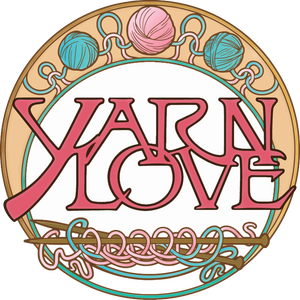What is fingering weight yarn?
A primer on common yarn weight terms.
So if you’re a new knitter attempting to choose a different yarn than your pattern calls for, you have likely noticed the confusing and seemingly nonsensical method of labeling yarn weights in the US. Since the weight of your yarn plays a huge part in ensuring your project turns out to be the size you expect, let’s dig deeper into this topic.
Find your perfect skein of fingering weight yarn.
Yarn Weight
Yarn weight simply means how big / thick a particular yarn is. The names given to each general category of weight are non-linear, which makes it a bit confusing at first. So here are common terms in use in the USA, given from lightest / thinnest to heaviest / thickest.
Cobweb – a yarn so thin you’ll practically need a magnifying glass to use it.
Lace – still ultra-thin; great for extra floaty shawls.
Fingering – thin, but durable enough for everyday wear. A common weight for socks and shawls.
Sport – medium thick yarn, good for lightweight garments or thick winter socks.
DK – stands for Double Knitting weight. On the light side of middle of the road and a popular weight for garments.
Worsted – truly the middle of the yarn thickness road here. Great for snuggly sweaters and projects that don’t take forever.
Aran – heavier than worsted weight, but not yet bulky. I like this weight for thick hats!
Bulky – you guessed it, this is a fat yarn! Super squishy & very warm.
Super Bulky – even fatter yarn. This category is a catchall for all kinds of extremely thick yarns and roving.
I love this infographic chart by All Free Knitting to really help understand everything you need to know about knitting needles, yarn types, and projects. It includes the yarn weight numbers from 0 to 7, the category, from lace to roving, the knitting needle sizes (in both US and metric) as well as the ideal projects for each type of yarn.
Download it and keep it handy when you’re searching for the perfect yarn for your next project!
In need of the perfect skein of fingering weight yarn for your next knitting project? Find all my fingering weight yarn by clicking here.



Comments
Thank you for posting this, I bought a pattern online and it said I had to use the yarn it was made for. I don’t live in the states and thought I would pick up yarn in Canada. I was confused until you answered my question. Thank you.
Hi Lynne –
From what I can tell, the discontinued Patons Fairytale yarn is a Dk weight yarn. It’s ball band yardage was 160 yards per 50 grams. I would say finding a plied, DK weight yarn is your best weight for finding a substitute.
Since yarn ball put-ups vary here are identical, calculated yardage and weight in case your considering a substitute yarn with a put up of a different weight.
50 grams / 160 yards (original)
100 grams / 320 yards
4 oz or 113 grams / 361 yards
Good luck finding a good substitute!
Hi Lin – the ply system is an older way of classifying yarn. It’s fairly confusing as the UK ply system and the Australia ply system are different. Additionally, plies are actually tiny strands of yarn twisted together as a technique for spinning a larger, stronger yarn & plying as a technique to create yarn is still employed today.
When determining what weight of yarn to use, disregard the plies mentioned. In your situation, you’re looking for a fingering weight yarn. If you have an old pattern, which lists “ply” and no modern weight, you’ll have to make an educated guess based on where the pattern was published and the gauge / needle size listed.
In terms of modern yarns, really the only relevance ply has to construction is single ply vs. multi-ply. Single ply yarns – also referred to as singles – are produced and are very beautiful. However, a single ply, loosely spun is very delicate and also stretches a lot. It’s not suitable for any application where stress or wear will be placed on the item.
Shawls are good for single ply yarns, but sweaters will stretch and pill, and socks often fail within 1-2 wearings when knit from single ply yarns.
The term “plied yarn” refers to any yarn constructed from 2 or more plies. Practically speaking 2 plies will behave almost identically to 4 ply. So for your question specifically, almost any plied fingering weight yarn will work. Most often a single ply yarn will be noted as such in the description, and the majority of commercially spun yarns today are multi-plied.
I am looking for fingering 2 ply yarn for a fair isle pattern. where would it fit and where do I find it?
I have an English Patons pattern where the wool is no longer available. It is 3 ply fairytale yarn. Do you have any idea of a substitute – I cant seem to get 3 ply in the US, so would fingering be the best alternative. Many thanks
Hi Francine – baby yarn is usually a sport weight yarn suitable for use in baby and children’s garments. Because baby really isn’t an official weight designation I would recommend using the yardage and yarn information supplied by the pattern to help you determine if the yarn you’re considering is a good match for the pattern!
I still did not get an answer to my question. Is “baby yarn” the same as “fingering”. Trying to purchase baby yarn for a pattern but could on,y find fingering weight. Thanks.